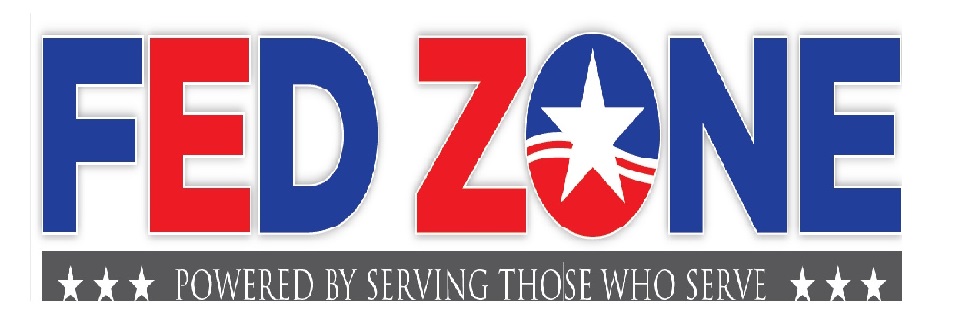IRS Releases New SECURE Act Regulations that Affect Required Minimum Distributions (RMDs) – Part III


Edward A. Zurndorfer –
On February23, 2022, the IRS released long-awaited regulations on required minimum distributions (RMDs) from IRAs and workplace retirement plans, including the Thrift Savings Plan (TSP). Many of the provisions in the new regulations replace current RMD regulations that were issued in 2002 and reflect significant changes made to post-death RMDs by the Setting Every Community Up for Retirement Enhancement (SECURE) Act passed into law in late December 2019.
The regulations are proposed to be effective for RMDs from inherited IRAs and workplace retirement plans starting Jan. 1, 2022. This is the third of three FEDZONE columns discussing the most important provisions of the new regulations and will discuss how the SECURE Act affects trusts as IRA and workplace retirement plan beneficiaries.
The first FEDZONE column in this series discussed the 10-year payment rule for non-eligible designated beneficiaries (non-EDBs) of traditional IRAs and traditional workplace retirement accounts (including the Thrift Savings Plan or TSP). The second FEDZONE column in this series discussed the 10-year payment rule for non-EDBs of Roth IRAs and Roth workplace retirement plans including the Roth TSP. Also discussed were the RMD rules under the SECURE Act for successor beneficiaries of inherited IRAs and workplace retirement plans.
Some General Rules with Respect to Naming Trusts as an IRA Or a Workplace Retirement Plan Beneficiary
Only certain trusts qualify as a designated beneficiary of an IRA or a workplace retirement plan for RMD purposes. All of the following requirements must be met in order for a trust to be treated as a designated beneficiary:
- (1) The trust is valid under state law
- (2) The trust is irrevocable or will by its terms become irrevocable upon the death of the individual who established the trust
- (3) The trust beneficiaries are identifiable from the trust document, and
- (4) A copy of the trust instrument is provided to the IRA trustee or retirement plan administrator.
How does naming a trust as an IRA beneficiary or retirement plan beneficiary affect the RMD? If the trust meets the four criteria above by September 30 of the year following the year of the death of the IRA owner or retirement plan participant, then the trust beneficiaries are considered the beneficiaries for computing the post-death RMDs.
If one of the trust beneficiaries is not an individual (for example, a charity), then the IRA owner or retirement plan participant is treated as not having a designated beneficiary for computing post-death RMDs. In that case, if the IRA owner or retirement plan participant died on or after his or her required beginning date (RBD) then post-death RMDs will be based on the IRA owner’s or retirement plan participant’s single life expectancy. The RBD is April 1 following the year a traditional IRA owner became age 70.5 if the IRA owner was born before July 1,1949 and April 1 following the year a traditional IRA owner becomes age 72 if the IRA owner was born after June 30, 1949.
How Does the SECURE Act Affect the Naming of a Trust as a Planning Strategy?
As a result of the SECURE Act requirement that a non-EDBs must withdraw an inherited IRA by the end of the 10th year following the year the IRA owner or workplace retirement plan participant died, trusts have been downgraded as a planning strategy. The recently issued IRS proposed regulation on RMDs from IRAs and workplace retirement plans do not change that. Most trust beneficiaries will still need to withdraw the entire amount of an inherited IRA within 10 years of the death of the IRA owner or workplace retirement plan participant.
But the recently issued IRS proposed regulations do in fact clear up some of the confusion that the SECURE Act created within the area of naming a trust as a beneficiary of an IRA. In particular, the IRS retained the existing “see-through” rules for trusts in which trust beneficiaries can be treated as IRA beneficiaries if the trust meets certain requirements as presented above. The IRS also retained the existing distinction between “conduit” and “accumulation” trusts when determining which trust beneficiaries must be considered for payouts from the IRA to the trust.
A “conduit” trust as the name suggests is merely a “conduit” to pass distributions from an IRA to the trust beneficiary. When a conduit trust is the named beneficiary of an IRA, the post-death distribution from the IRA (of the deceased IRA owner) are first paid from the IRA to the trust and then immediately to the beneficiaries of the trust. If the conduit trust qualifies as a “see-through” trust, then only the trust’s income beneficiaries are considered in determining life expectancy for RMD purposes. If there is more than one income beneficiary, then life expectancy will be based on the age of the oldest beneficiary. An example of an income beneficiary is a spouse who is an eligible designated beneficiary or EDB. The life expectancies of contingent or remainder life expectancies are not considered. The following example illustrates:
Example 1. Natalie died in 2020. The beneficiary of her traditional IRA is a conduit (see-through) trust that leaves income to her surviving spouse Daniel for life and then the remainder income to her three adult children (“remainder” trust beneficiaries). For purposes of determining IRA payments to the trust, Natalie’s three children are disregarded. Since Daniel as a spouse is an EDB, once Daniel reaches his required beginning date the IRA RMDs can be paid to the trust each year until Daniel dies. The RMDs each year are computed each year based on the IRA account balance and Daniel’s single life expectancy as redetermined each year.
An accumulation trust (also known as a “discretionary” trust) does not have to pay out all IRA distributions to the trust beneficiaries. The trust’s trustee is given discretion to payout some, none, or all of the IRA distributions to the trust beneficiaries. Note that whatever IRA distributions that are not paid to the trust beneficiaries remain in the trust and taxed within the trust. Trust tax rates are significantly higher than individual tax rates resulting in more taxes than necessary to be paid on IRA distributions.
If the accumulation trust qualifies as a “see-through” trust, then both the income and remainder trust beneficiaries must be considered in determining payouts from the IRA to the trust. The age of the oldest income or remainder trust beneficiary is used to calculate RMDs on the inherited IRA. The following example illustrates:
Example 2. On August 27, 2021, Allan died at age 77 having named his accumulation (and “see-through”) trust as the beneficiary of his IRA. The trust pays specific amounts to Allan’s wife Ruth. Upon Ruth’s death, all funds in the trust are paid to Allan’s youngest sister Charlotte, age 65. Since Charlotte is more than 10 years younger than Allan, Charlotte is a non-eligible designated beneficiary and therefore the 10-year payment rule will apply to Charlotte’s IRA payments. Annual RMDs to the trust would be required in years 1 through 9 based on Ruth’s life expectancy. This is because Allan died after his required beginning date.
Federal employees and retirees who are interested in setting up trusts as beneficiaries of their IRAs or any workplace retirement plan (including the TSP) they may own are encouraged to speak with a qualified accountant and lawyer to ask any questions that they may have and most importantly find out whether naming a trust as an IRA or workplace retirement plan beneficiary is appropriate to them and meets their estate planning needs.
Edward A. Zurndorfer is a CERTIFIED FINANCIAL PLANNER™ professional, Chartered Life Underwriter, Chartered Financial Consultant, Chartered Federal Employee Benefits Consultant, Certified Employees Benefits Specialist and IRS Enrolled Agent in Silver Spring, MD. Tax planning, Federal employee benefits, retirement and insurance consulting services offered through EZ Accounting and Financial Services, and EZ Federal Benefits Seminars, located at 833 Bromley Street – Suite A, Silver Spring, MD 20902-3019 and telephone number 301-681-1652. Raymond James is not affiliated with and does not endorse the opinions or services of Edward A. Zurndorfer or EZ Accounting and Financial Services. The information has been obtained from sources considered to be reliable, but we do not guarantee that the foregoing material is accurate or complete. While we are familiar with the tax provisions of the issues presented herein, as Financial Advisors of RJFS, we are not qualified to render advice on tax or legal matters. You should discuss tax or legal matters with the appropriate professional.
